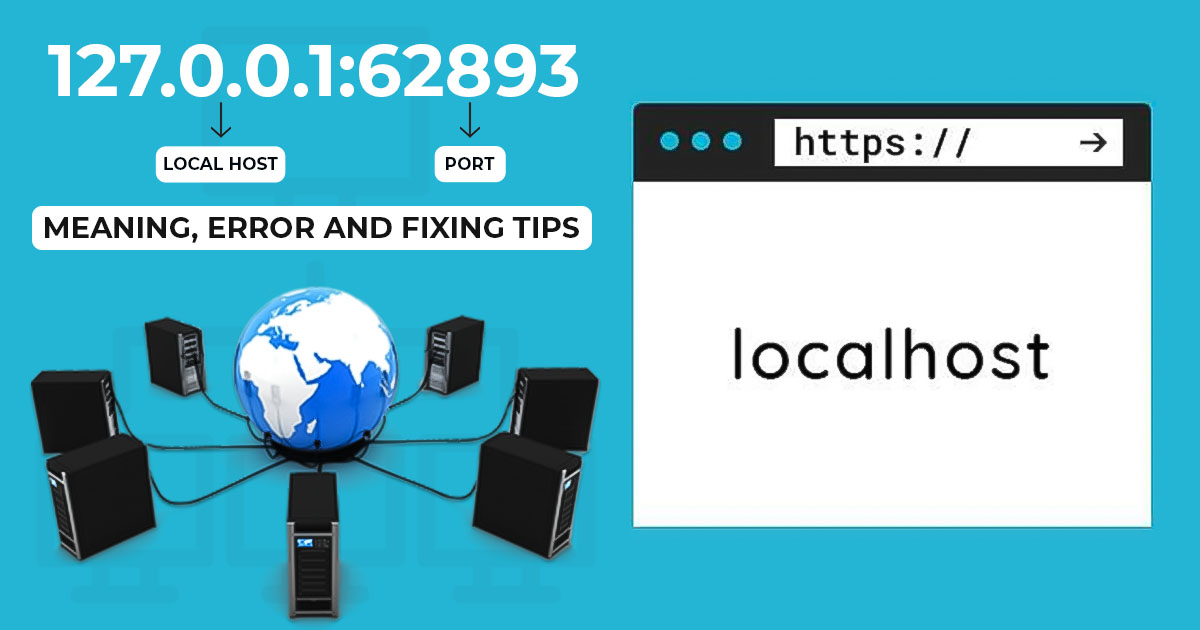Ever stumbled upon the address “127.0.0.1:62893” and wondered what it actually means? If you’ve been tinkering with networks, playing around with servers, or even just casually browsing tech forums, this might be familiar. But let’s clear the air—this isn’t just some random number combo. There’s a deeper reason why “127.0.0.1” and “62893” are often paired together. Let’s dive into it!
Understanding the Basics: What is 127.0.0.1?
To start, “127.0.0.1” is probably one of the most recognized IP addresses in the world of networking. Commonly known as the “loopback” address, it’s your computer talking to itself. In simple terms, whenever you use this address, you’re telling your computer, “Hey, let’s communicate within our system without going outside.”
This loopback feature comes in handy, especially for developers. It allows them to test applications, run servers, and experiment without needing a live connection to the internet. Essentially, 127.0.0.1 is your local environment—your computer’s private world where it can play around and troubleshoot without affecting the outside world.
So, What’s the Story Behind Port 62893?
Now, where does “62893” come in? The IP address “127.0.0.1” is only half of the story. The other half is the port number. Think of an IP address as your house address. The port is like a specific room in your house. For example, you might have different rooms for the kitchen, living area, or bedrooms. In networking terms, these rooms (ports) allow different services and applications to operate independently.
The number “62893” is just one of the many thousands of ports available. Ports range from 0 to 65535, with some reserved for well-known services. For example, HTTP typically runs on port 80, while HTTPS runs on port 443. However, numbers like 62893 fall into the range known as “ephemeral ports.” These are temporary ports usually chosen at random by the operating system for a short period.
Why Would You See “127.0.0.1:62893” Specifically?
So, you might be wondering, out of all the possible port numbers, why this one? There isn’t a definitive answer that ties the port number 62893 to something universally special. However, it could be linked to a specific application, service, or local server setup.
Developers often assign arbitrary high port numbers during testing or debugging phases. If you see “127.0.0.1:62893” pop up, it’s likely related to something running locally on your computer—perhaps a local server, a development tool, or even a piece of software performing background tasks.
The Role of Localhost in Development
Let’s zoom out a bit and look at why localhost (127.0.0.1) plays such a crucial role in development. For anyone diving into web development, setting up local environments is the first step. You don’t want to directly deploy code to a live server and risk breaking things. Instead, developers use localhost to safely test changes.
Using ports like 62893 gives developers flexibility. They can run multiple applications simultaneously on the same machine without conflicts. Imagine running a database server, a web server, and an API service all at once. With different ports, each application stays neatly within its lane.
What If You’re Not a Developer—Should You Care About “127.0.0.1:62893”?
You don’t have to be a tech wizard to bump into addresses like these. If you’re just casually using your computer, you might still come across this IP-port combo. It could show up in log files, browser address bars, or even error messages.
For non-technical users, it’s a good reminder that “127.0.0.1” isn’t a dangerous address. Since it’s confined to your machine, there’s no external risk involved. If you ever see “127.0.0.1:62893” or something similar, it usually points to an internal process. Perhaps an application is running a local server, or maybe a piece of software is checking something in the background.
Common Use Cases for “127.0.0.1:62893”
Let’s talk about where this address might actually show up in the real world. One likely scenario is when working with development environments. For example, when running a local web server, your terminal might display something like “Server running at 127.0.0.1:62893.”
Another situation could involve local software setups. Tools like Docker, for instance, often spin up services locally using various ports. Developers working on microservices might find themselves running multiple instances, each tied to a different high-numbered port.
Even some games and applications could use this setup for local multiplayer modes or communication between different parts of the software. If you’re hosting something locally, the chances are high you’ll encounter addresses like these.
Troubleshooting Issues with 127.0.0.1 and High Ports
While 127.0.0.1 is typically problem-free, issues can sometimes arise when working with certain ports. If you notice errors, it could be due to conflicts—especially if multiple applications try to use the same port.
For instance, let’s say two different programs try to access 62893 at the same time. This can result in errors or crashes. Fortunately, solutions are straightforward. You can manually assign different ports or tweak the settings to avoid conflicts.
Another common issue could be firewall settings. Even though localhost addresses like 127.0.0.1 are internal, some overly strict firewall configurations might block certain ports, leading to connection issues.
Wrapping Up: What Does “127.0.0.1:62893” Mean for You?
In the grand scheme of things, “127.0.0.1:62893” is just one small piece of the massive puzzle that is networking. For developers, it’s a useful setup for testing and running local applications. For everyday users, it’s mostly a background detail you’ll rarely have to worry about.
However, if you’re curious or want to dig deeper, exploring how IP addresses and ports work can open up new understandings. Who knows? Maybe the next time you spot an address like this, you’ll have a better grasp of what’s happening behind the scenes. Whether you’re troubleshooting, developing, or simply learning, knowing about concepts like 127.0.0.1 and high-numbered ports gives you an edge in today’s tech-driven world.
So next time you come across “127.0.0.1:62893,” you can smile and say, “I know exactly what’s going on here!”
